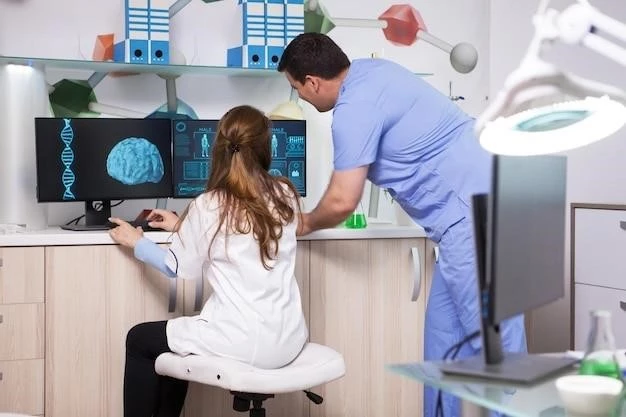Overview of Craniodiaphyseal Dysplasia
Craniodiaphyseal Dysplasia is a rare genetic disorder characterized by abnormal bone growth in the skull. Understanding its causes is crucial.
Causes of Craniodiaphyseal Dysplasia
Craniodiaphyseal Dysplasia is primarily caused by mutations in the ANKH gene‚ leading to abnormal bone growth in the skull. These mutations disrupt the regulation of calcium deposits in bone tissue‚ resulting in the characteristic features of the condition. The exact mechanisms by which these mutations cause the abnormal bone growth are still under investigation‚ but it is believed to involve the dysregulation of osteoblast and osteoclast activity. The genetic inheritance pattern of Craniodiaphyseal Dysplasia is autosomal dominant‚ meaning that a mutation in one copy of the ANKH gene is sufficient to cause the disorder. In some cases‚ the condition may arise spontaneously in individuals without a family history of the disease due to new mutations in the gene.
Symptoms and Diagnosis of Craniodiaphyseal Dysplasia
Craniodiaphyseal Dysplasia presents with cranial nerve compression‚ facial distortion‚ hearing loss‚ and vision problems. Diagnosis involves imaging studies and genetic testing.
Common symptoms of Craniodiaphyseal Dysplasia
Common symptoms of Craniodiaphyseal Dysplasia include progressive facial distortion‚ bulging eyes‚ hearing loss‚ vision impairment‚ recurrent sinus infections‚ neurological complications due to cranial nerve compression‚ intellectual disability‚ and dental abnormalities. These symptoms typically manifest in early childhood and worsen over time‚ impacting the individual’s quality of life and requiring ongoing medical management and support.
Diagnostic procedures for Craniodiaphyseal Dysplasia
Diagnosing Craniodiaphyseal Dysplasia involves a combination of clinical evaluation‚ imaging studies such as CT scans and MRIs to assess bone abnormalities in the skull‚ genetic testing to identify mutations in the ANKH gene‚ and consultation with specialists like geneticists‚ radiologists‚ and neurosurgeons. These diagnostic procedures help confirm the presence of the disease‚ determine its severity‚ and guide treatment decisions to manage the complications associated with Craniodiaphyseal Dysplasia effectively.

Treatment Options for Craniodiaphyseal Dysplasia
Treatment for Craniodiaphyseal Dysplasia focuses on managing symptoms and complications. Surgical interventions‚ such as cranial decompression or facial reconstructive surgery‚ may be required to alleviate pressure on cranial nerves or correct facial deformities. Other treatment options include hearing aids for hearing loss‚ vision aids for visual impairment‚ dental care‚ and medications to address sinus infections or neurological symptoms. A multidisciplinary approach involving specialists in neurosurgery‚ otolaryngology‚ ophthalmology‚ and dentistry is essential to provide comprehensive care and improve the quality of life for individuals with Craniodiaphyseal Dysplasia.
Prognosis and Complications of Craniodiaphyseal Dysplasia
The prognosis of Craniodiaphyseal Dysplasia varies depending on the severity of symptoms and the timely management of complications. Potential complications include cranial nerve dysfunction leading to sensory deficits‚ vision and hearing impairment‚ obstructive sleep apnea‚ intellectual disability‚ and facial deformities affecting quality of life. Early diagnosis‚ multidisciplinary care‚ and surgical interventions can help mitigate complications and improve long-term outcomes for individuals with Craniodiaphyseal Dysplasia.
Research Advances in Craniodiaphyseal Dysplasia
Ongoing research in Craniodiaphyseal Dysplasia focuses on understanding the molecular mechanisms underlying the disease‚ exploring potential gene therapies to correct ANKH gene mutations‚ and investigating novel treatment strategies to address bone overgrowth and associated complications. Collaborative efforts between geneticists‚ molecular biologists‚ and clinical specialists aim to develop targeted therapies and improve outcomes for individuals affected by Craniodiaphyseal Dysplasia. These research advances offer hope for more effective treatments and better management of this rare genetic disorder in the future.
Support and Resources for Individuals with Craniodiaphyseal Dysplasia
Individuals with Craniodiaphyseal Dysplasia and their families may benefit from accessing support groups‚ educational materials‚ and specialized healthcare providers familiar with the condition. Organizations such as rare disease foundations‚ genetic counseling services‚ and advocacy groups can offer valuable resources‚ information on treatment options‚ and emotional support. Connecting with other affected individuals through online communities or attending conferences can provide a sense of belonging and empowerment. By utilizing these support networks and resources‚ individuals with Craniodiaphyseal Dysplasia can navigate their healthcare journey more effectively and enhance their overall well-being.
Genetic Factors in Craniodiaphyseal Dysplasia
Craniodiaphyseal Dysplasia is predominantly caused by mutations in the ANKH gene‚ affecting the regulation of bone mineralization. These genetic alterations contribute to abnormal bone growth in the skull and facial bones‚ leading to the characteristic features of the disorder. The ANKH gene encodes a protein involved in transporting inorganic pyrophosphate‚ essential for bone formation regulation. Variations in the gene disrupt this process‚ resulting in excessive bone deposits and bone overgrowth seen in Craniodiaphyseal Dysplasia. Understanding the genetic factors underlying this condition is vital for accurate diagnosis‚ genetic counseling‚ and potential targeted treatment approaches in the future.
Lifestyle Management for Craniodiaphyseal Dysplasia
Lifestyle management for individuals with Craniodiaphyseal Dysplasia should focus on optimizing overall health and well-being. This includes regular follow-up appointments with healthcare providers‚ adherence to prescribed treatment regimens‚ maintenance of a healthy diet to support bone health‚ consistent physical activity within individual capabilities‚ and attention to dental hygiene. Additionally‚ it is essential to prioritize mental health and seek emotional support when needed to cope with the challenges associated with the condition. By maintaining a balanced lifestyle and integrating appropriate self-care practices‚ individuals with Craniodiaphyseal Dysplasia can enhance their quality of life and overall health outcomes.
